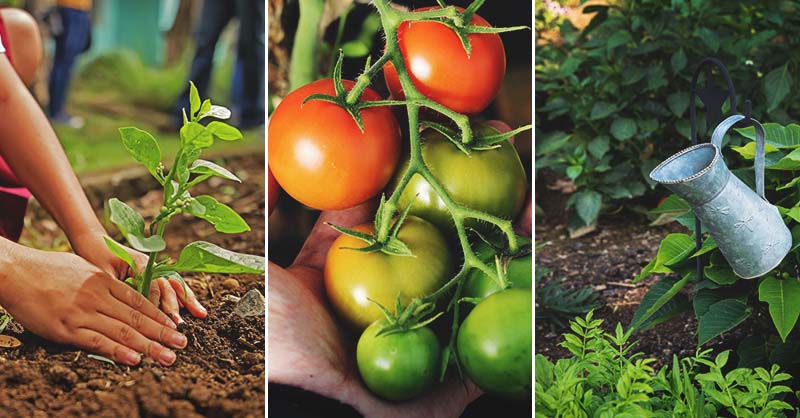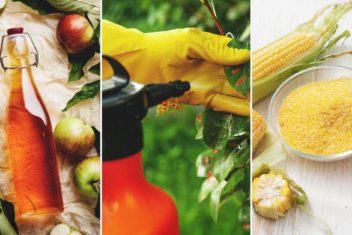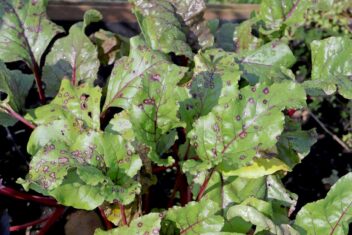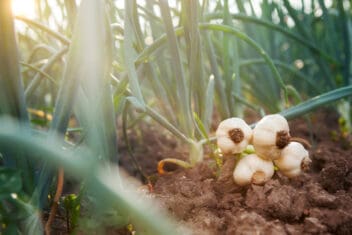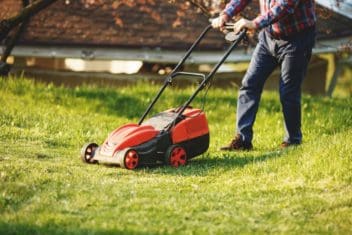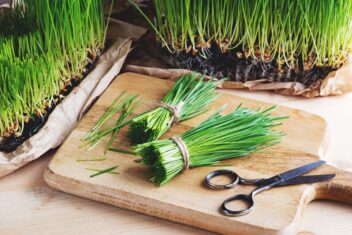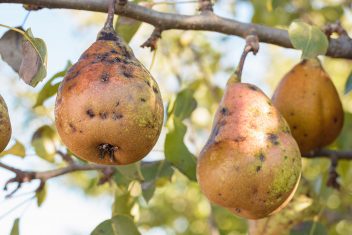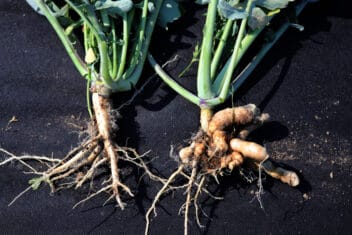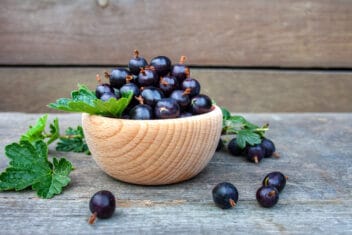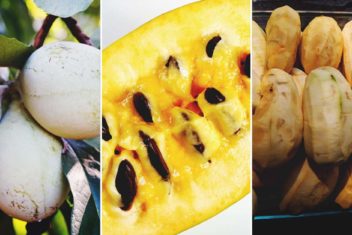Winter is almost upon us. Are you ready?
Gardeners miss their gardens when the weather is cool, but we also enjoy the rest. If you’re dreading the long winter, the good news is there’s still more to do.
You’ve come to the right place if you are wondering what you should be doing around your garden during November.
I’m going to share with you the gardening tasks you may need to attend to this month by zone and region.
This should help you cross-reference your needs and give the ultimate care to your garden as you’re preparing for colder months.
Here are your November gardening tips to do around your garden:
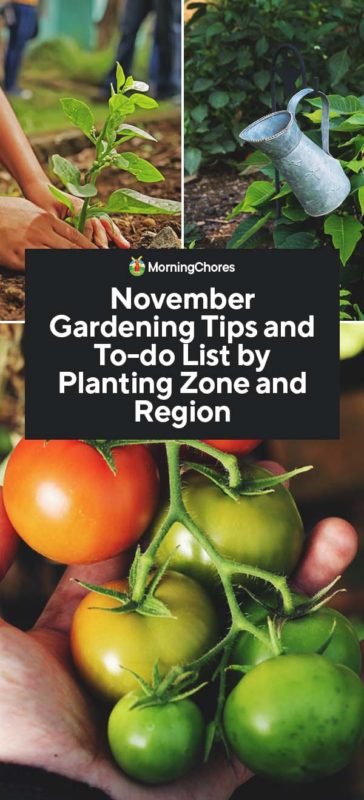
Garden Chores by Planting Zone
Zone Three
Have you had smaller amounts of rain in your zone? Before the ground freezes solid, use this time to water the trees and shrubs thoroughly.
Take the time this month to check any potatoes, garlic, or onions you may have stored in your root cellar. Be sure to check them for any signs of rot as this could spread and ruin other foods you’re saving for use this winter.
This is also an excellent time to take care of any of your power and garden tools. Be sure to clean, sharpen, and make any repairs to them before storage.
Be sure you store them in a place where they’ll be protected from the elements of winter. Also, clean up any birdhouses you’re planning on leaving out over the winter.
Fill them with food to help out any birds in your area survive this cold season.
Zone Four
Now is the time to clean up your garden thoroughly. Go through and make sure all debris is removed from the garden areas.
This will make it difficult for any pests or diseases to find a spot to overwinter in your garden.
Take the time to care for any new trees you may have recently planted. Their bark isn’t tough enough to survive the elements this zone provides.
Therefore, wrap the trunks to protect the bark over the winter months.
When the first snow and ice storms hit, avoid the temptation to remove snow and ice from your wintergreen shrubs and trees.
You may cause more damage trying to remove these elements from the plants than if they’re allowed to stay.
While caring for your trees this month, be sure to go around your fruit trees and clean up any fruit which may be lying beneath them.
This should be your last month to cut the grass. When giving your lawn the final cut for the year, be sure to cut it short.
If you don’t, the grass could mold beneath the wet snow this winter which can harm your lawn.
Take this month to care for your perennials. Wait until the ground freezes fully. When it has, add mulch to cover the perennials wholly.
This will stop them from going through the constant cycle of freezing and thawing which can cause damage to the plant.
The final thing you should do this month to care for your garden is to show care to your compost pile. Give it a turn and see if it feels dry.
If it does, add some water to the compost pile and work it in. This will help get your garden off to a proper start the next growing season.
Zone Five
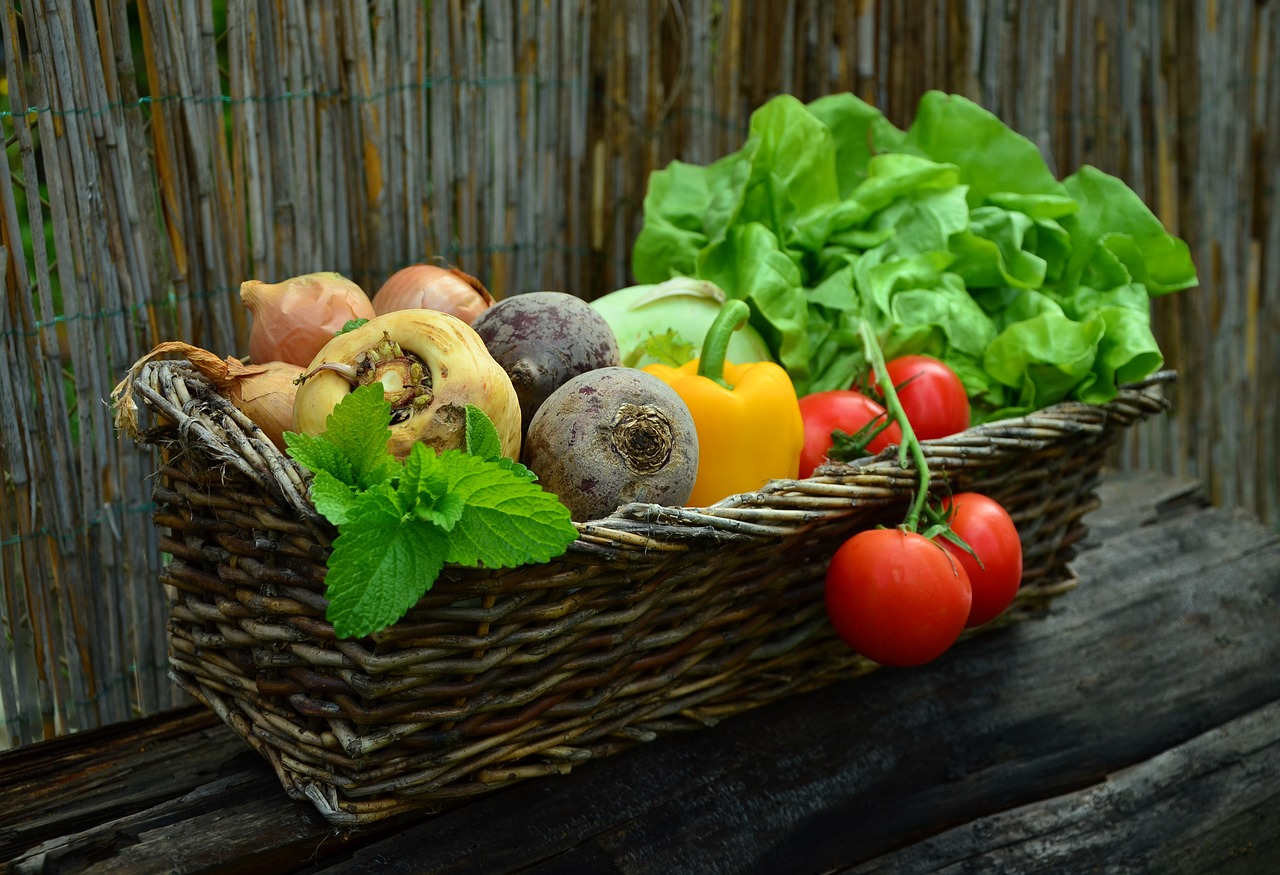
Do you enjoy growing your own garlic? November is the month to plant garlic if you live in zone 5. After planting the garlic be sure to cover the bed with 6-inches of mulch.
November is also the month to finish harvesting any remaining root veggies which are still in the ground.
You may not be aware, but some people grow their own Christmas trees. If you’re planning on doing this, be sure to go ahead and dig the holes where you plan on planting the tree or trees.
If you don’t do this now, the ground will be too frozen to dig the hole later.
Finally, take care of your perennials this month. Any perennials, which isn’t a spring flower, rose, or a grassy plant, should be cut back to only 2-3-inches tall.
However, your roses should be pruned to where they’re approximately 1-foot tall. Add compost to the base of the plant and put a rose cone around it to protect the plant from the harsh winter.
Zone Six
Fall is upon you in zone 6, and you’ve probably noticed an increase in leaves around your property. Use this month to get them cleaned up before winter hits.
They’re great to use as a mulch on your garden beds, or you can use the leaves as a component for your compost.
This is your last chance to plant any bulbs you’d like to see bloom in spring. If you enjoy spring color, use this month to put some bulbs in the ground.
If you’re growing lettuce and spinach, check on them. They’ll most likely need to be thinned out at some point during November.
Any crops you’re planning on leaving out over winter should have a thick layer of mulch or straw added to them for insulation purposes.
Harvest any remaining cabbage, carrots, Brussel sprouts, and kale. If you store them properly, you can enjoy some of your crops all winter long.
Be sure to pay attention to your perennials this month. They should be cut back to where they’re only 2-3-inches in height. The exception for this is roses, mums, and any spring flowers. Leave them be.
Zone Seven
If you’re in zone 7, you still have a few things you can be doing or preparing for November.
Be sure to protect your crops before a hard freeze taking place. Crops such as lettuce, spinach, chives, and parsley will need to be covered if you’re expecting them to be able to survive a freeze.
Though freezing temperatures will come in this month, you still have time to plant. You can plant any trees, shrubs, or strawberry plants this month.
Use this time also to collect any leaves which may have fallen around your property. They make an excellent mulch for your garden beds, or they can be added to your compost pile as well, or use them for fall decoration inside the house.
Zone Eight
November is still a busy month if you’re in zone 8. This is the time to plant your fruit trees.
You can also plant Brussel sprouts, cabbage, broccoli, radishes, beets, spinach, carrots, kale, and peas if you plant them in a covered area such as a greenhouse, cold frame, or under a row cover.
Harvest the tomatoes, peppers, and eggplant you planted earlier in the summer. You should also use this time to plant any strawberry plants you’d like to see grow in the spring.
Zone Nine
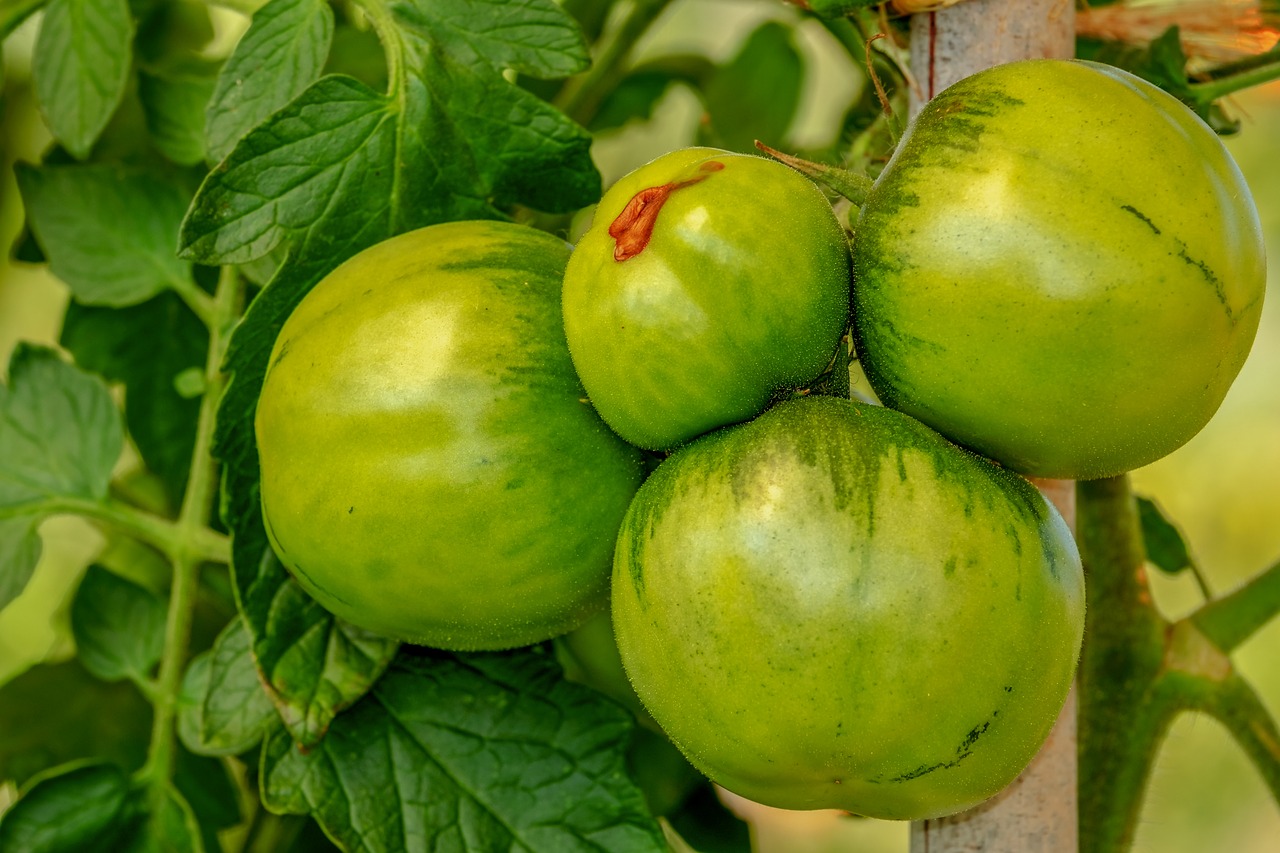
Cold weather is beginning to set in, even in zone 9. Tomatoes don’t handle cold weather well, but you may notice the plants are still producing and some of the fruit is still green.
Well, don’t lose your tomatoes. Instead, pull the tomato plants up by the roots, hang them indoors and wait until the tomatoes ripen before plucking the fruit and discarding the plant.
November is also a great time to plant garlic and onions in this zone. Be sure to protect your lettuce and spinach crops as the cool weather moves in. They should be covered when the temperatures drop.
Harvest any remaining cabbage, broccoli, carrots, turnips, and kale you have remaining. Wait until after the first frost because the frost will help the harvest be all the sweeter in flavor.
Use the time you have this month to add compost around the base of your citrus trees. Also, plant wildflowers this month.
You will need to toss the seeds out into an opening or bed. Once they’ve been dispersed, rake soil over the seeds.
Zone Ten
Zone 10 is hopping during November. It’s a time of great growth, harvest, but also a time to protect from the elements as well.
You should be harvesting beans, squash, any fruit, carrots, cucumbers, peas, lettuce, and kale. When harvesting fruit, be sure to clean-up any fruit which may have fallen to deter pests and diseases from hanging out around your fruit trees or plants.
Though you’re harvesting some plants, this is still the proper time to start more plants. Keep starting tomato and pepper plants.
However, be sure you keep an eye on the weather and be prepared to protect these plants if a cold-snap is near.
Be sure to prune your raspberry bushes this month and give the necessary attention to the amount of rain your crops are receiving.
Your garden should get 1-inch of rain per week whether it be from rainfall or you watering the garden. In the event of a freeze, be sure you water the soil and not the plants themselves.
Also, be sure to cover the plants during a freeze with either straw, mulch, a row cover, or even a large sheet.
Garden Chores by Region
Southwest Region
- Keep watering your plants; dry plants are more easily damaged during a freeze than well-watered and nourished plants
- Protect citrus trees from frost
- Remove leaves from your yard; add to compost, use as mulch, but certainly removed from your lawn to protect it from a mold
- Plant cold-hardy flowers such as pansies and snapdragons
- Harvest warm-weather crops while continuing to plant cool-weather crops such as broccoli, kales, cabbage, onions, garlic, lettuce, spinach, turnips, kohlrabi, chard, and endive
Northwest Region
- Check all vegetables in the root cellar for rot because it’ll spread and destroy any other veggies you have in storage nearby
- Protect winter crops with a cold frame
- Clean-up all fallen fruit around the base of your fruit trees to deter pests and diseases
- Clean-up your garden to deter pests and diseases
- Mulch berry plants
- Winterize lawnmower
- Add compost to your asparagus
Midwest
- Plant any new trees and shrubs you want to add to your landscaping
- Keep mowing your yard to keep the grass short and free of lawn-damaging pests
- Mulch all flowers and bulbs once the ground freezes to help insulate and protect
- Clean-up and till your garden
- Clean-up all fallen fruit to deter pests and diseases
- Store your harvest in a cool, dark location such as a root cellar, cool corner of a basement, under a bed, or in a closet
- Clean-up leaves in your yard and use them in the compost or as a mulch
- Winterize all lawn and garden tools and equipment
- Get bird feeders and baths cleaned and filled for your feathered friends
- Pick-up garden hoses and drain all water from the hoses and faucets
Northeast
- Store harvest in a root cellar, dark basement, or any other cool, dark location
- Winterize lawnmower
- Turn compost pile one more time for the year
- Mark all perennial and bulbs with stakes to avoid damaging them in the spring when aerating the soil
- Plant any new trees and shrubs
- Wrap evergreen trees and shrubs in burlap to protect from snow and ice; if snow and ice attach to the evergreen tree, don’t remove it because it could damage the plant
- Prune grapes
- Clean-up and till the garden
- Add 2-inches of mulch to perennial beds after the ground freezes
- Bring in the garden hoses for the year and drain all outdoor faucets
- Check any trees around your home for branches which could fall and damage your home when snow and ice hit
Southeast
- Plant trees and shrubs but don’t prune what you’ve already planted because it encourages new growth
- Clean-up all leaves in your yard to avoid lawn damage but do add them to your compost or use them as a mulch
- Add compost to perennial beds and mulch to all plants and trees to help fight weeds and hold moisture
- Add color to your home by planting cold-hardy flowers such as carnations, petunias, and pansies
- Plant beets, cabbage, radishes, broccoli, spinach, and onions
You now have a solid idea as to what you should be doing around your garden during November by both your planting zone and region.
Hopefully, this will help you keep your lawn in order over the winter months and give your garden the best possible start when spring arrives.
